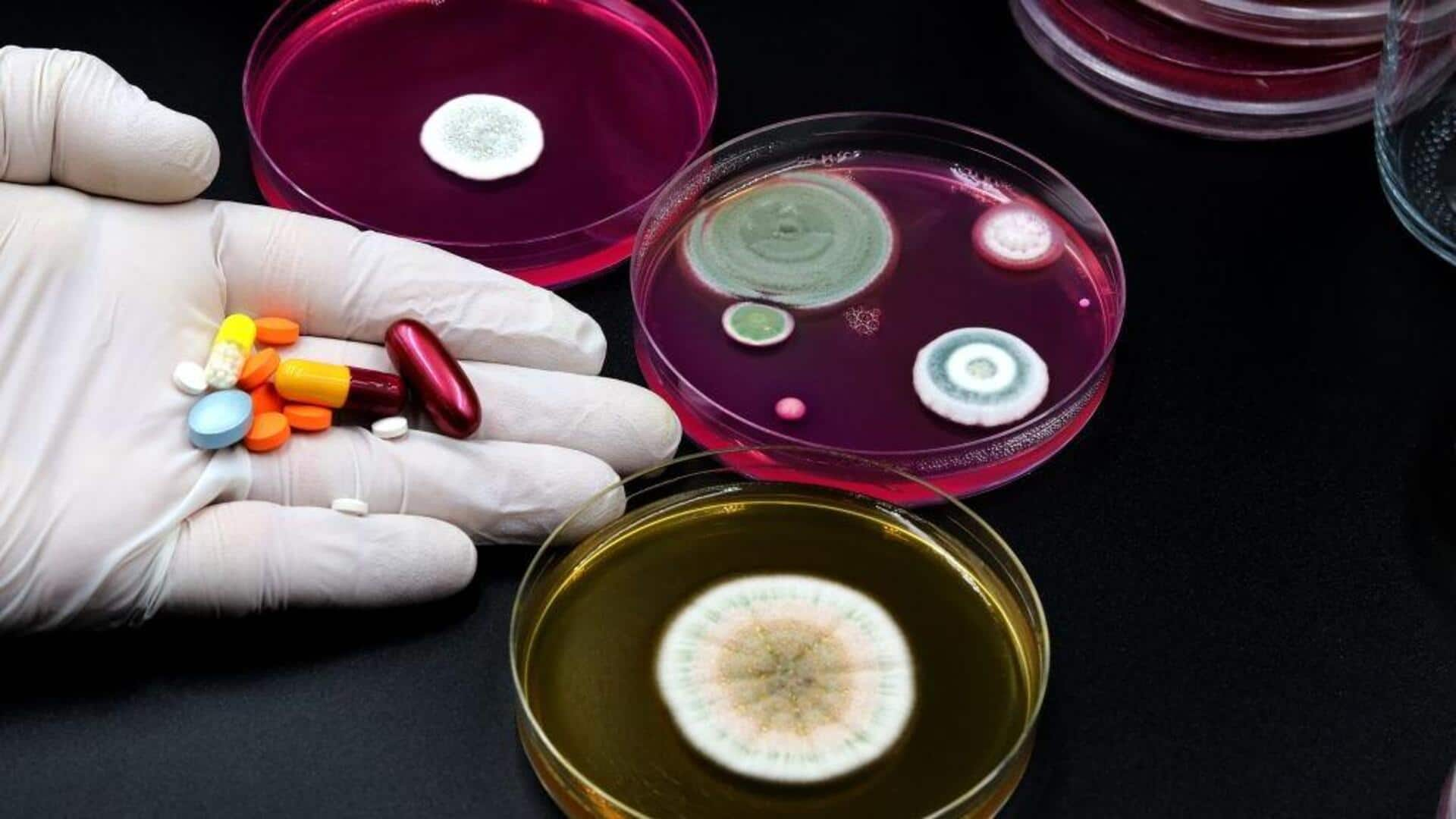
3M child deaths linked to drug resistance: What is it?
What's the story
A recent study by leading experts in child health has revealed a staggering statistic: over three million children worldwide died from infections resistant to antibiotics in 2022.
The research by Dr. Yanhong Jessika Hu and Professor Herb Harwell, indicates that the highest risk for these fatalities was among children in Africa and Southeast Asia.
This alarming trend is attributed to antimicrobial resistance (AMR), a growing public health threat where microbes evolve and render antibiotic drugs ineffective.
Antibiotic crisis
Antibiotics: A double-edged sword in the fight against infections
Antibiotics are essential for treating a range of bacterial infections, from skin ailments to pneumonia.
They are also administered prophylactically to prevent infections in high-risk scenarios, such as surgeries or chemotherapy.
Antibiotic resistance occurs when bacteria change or adapt in ways that make antibiotics less effective or completely useless.
Instead of dying, the resistant bacteria survive, multiply, and continue to cause infections, which then become harder to treat.
Impact
What is accelerating antibiotic resistance
Antibiotic resistance occurs naturally, but human actions accelerate it. The primary reasons include:
1. Taking antibiotics for viral infections like colds or flu. Antibiotics have no impact on viral infections.
2. Not completing the full prescribed course.
3. Using antibiotics in livestock to promote growth.
4. Over-the-counter availability and self-medication in some countries.
Each time antibiotics are used unnecessarily or incorrectly, bacteria get another chance to adapt and resist. Over time, this creates "superbugs"—bacteria that resist multiple antibiotics.
Antibiotic surge
Surge in use of antibiotics in Africa, Southeast Asia
Between 2019 and 2021, the use of "watch antibiotics"—which carry a high risk of driving resistance—rose sharply by 160% in South East Asia and 126% in Africa.
During the same period, the use of "reserve antibiotics," considered last-resort options for treating severe and drug-resistant infections, increased by 45% in South East Asia and by a staggering 125% in Africa.
These trends highlight growing dependence on critical antibiotics and raise concerns about accelerating antimicrobial resistance across vulnerable regions.
Global issue
AMR affects everyone, but disproportionately impacts children
Professor Harwell will present these findings at the Congress of the European Society of Clinical Microbiology and Infectious Diseases in Vienna.
He stressed, "AMR is a global problem. It affects everyone. We did this work really to focus on the disproportionate way in which AMR affects children."
The World Health Organization (WHO) has flagged AMR as one of the most serious global health threats we face today.
Global threat
Why is AMR a global health concern
Antibiotic resistance makes curable infections harder to treat and increases the risk of severe illness or death—especially for children, the elderly, and those with weak immunity.
It drives up healthcare costs, extends hospital stays, and threatens the success of surgeries, cancer treatments, and organ transplants.
If left unchecked, even common infections could become deadly. The WHO warns that antimicrobial resistance could lead to 10 million deaths annually by 2050, reversing decades of medical progress.
Solution
Experts call for balanced antibiotic use and increased immunization
Dr. Lindsey Edwards, a senior lecturer in microbiology at King's College London, called the study "a significant and alarming increase compared to previous data."
She warned that without decisive action, AMR could undermine decades of progress in child health.
Professor Harwell admitted the complexity of AMR and stressed on the need for appropriate antibiotic use.
"There's going to be more antibiotics use because there's more people who need them but we need to make sure that they are used appropriately."